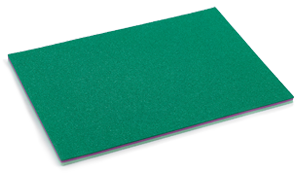Th11 . 25, 2024 15:31 Back to list
Exploring Different Types of Surfaces for Running Tracks and Their Benefits
The Importance of Running Track Surfaces
Running tracks are essential facilities for athletes ranging from beginners to seasoned professionals. The surface of a running track plays a significant role in the overall performance, safety, and enjoyment of runners. When considering a running track surface, several key factors—such as material, durability, and maintenance—come into play, affecting the track's usability and the athletes' experience.
One of the most common types of running track surfaces is polyurethane. This synthetic material is popular due to its durability and ability to provide a consistent running experience. Polyurethane tracks are designed to absorb shock, which helps reduce the risk of injuries associated with running on harder surfaces, such as asphalt or concrete. They offer excellent traction and are available in a variety of colors, allowing tracks to be customized to fit specific aesthetic or branding requirements.
In contrast, another prevalent surface is Tartan, a type of polyurethane-based track renowned for its resilience and performance characteristics. Tartan tracks are specifically engineered to ensure optimal grip and shock absorption, making them a favorite among competitive athletes. The surface’s texture helps prevent slipping, even in wet conditions, thereby enhancing safety. Additionally, Tartan tracks are weather resistant, meaning they can withstand harsh conditions without degradation, making them a smart long-term investment for schools and sports facilities.
running track surface

While synthetic surfaces like polyurethane and Tartan are widely preferred, traditional cinder and clay tracks still exist, especially in more rural settings. These natural surfaces can provide a softer running experience but often require more maintenance and are more susceptible to weather conditions. Over time, cinder can become uneven and challenging to run on, making consistent upkeep crucial to maintaining safety and usability.
The choice of track surface also impacts the performance of athletes. A well-designed synthetic track allows for faster running times due to reduced energy loss during foot strikes, while uneven or hard surfaces can lead to increased fatigue and a greater likelihood of injury over prolonged use. Furthermore, the right surfacing can encourage more people to take up running, as a safe and enjoyable environment fosters greater participation in the sport.
Maintenance is another critical aspect of track surfaces. Regular upkeep can prolong the lifespan of the running track and ensure safe conditions for athletes. For synthetic surfaces, cleaning and repairs should be carried out periodically, while natural surfaces like cinder require raking and leveling to maintain a smooth course.
In conclusion, the surface of a running track is pivotal in shaping the experiences of athletes and determining the overall success of a facility. When selecting a track surface, factors such as material, durability, and maintenance should be carefully considered. A well-maintained running track can inspire athletes at all levels, fostering an environment in which they can train effectively and safely. As the sport continues to grow, understanding the value of proper track surfaces will remain essential for promoting health, performance, and enjoyment in running.
-
Premium Pickleball Sport Court Solutions Durable & Customizable Courts for All Levels
NewsJul.06,2025
-
Springs Pickleball 9 Indoor Courts Available – Premier Pickleball Experience
NewsJul.06,2025
-
Durable Plastic Pickleball Court Tiles Versatile Commercial Plastic Flooring Solutions
NewsJul.05,2025
-
Optimal Height for Indoor Pickleball Court Meet Official Standards & Enhance Play
NewsJul.05,2025
-
Premium Pickleball Basketball Sport Court Tiles – Durable, Versatile, Easy Installation
NewsJul.05,2025
-
Converting Tennis Court to Pickleball Fast & Affordable Solutions for Any Facility
NewsJul.04,2025

